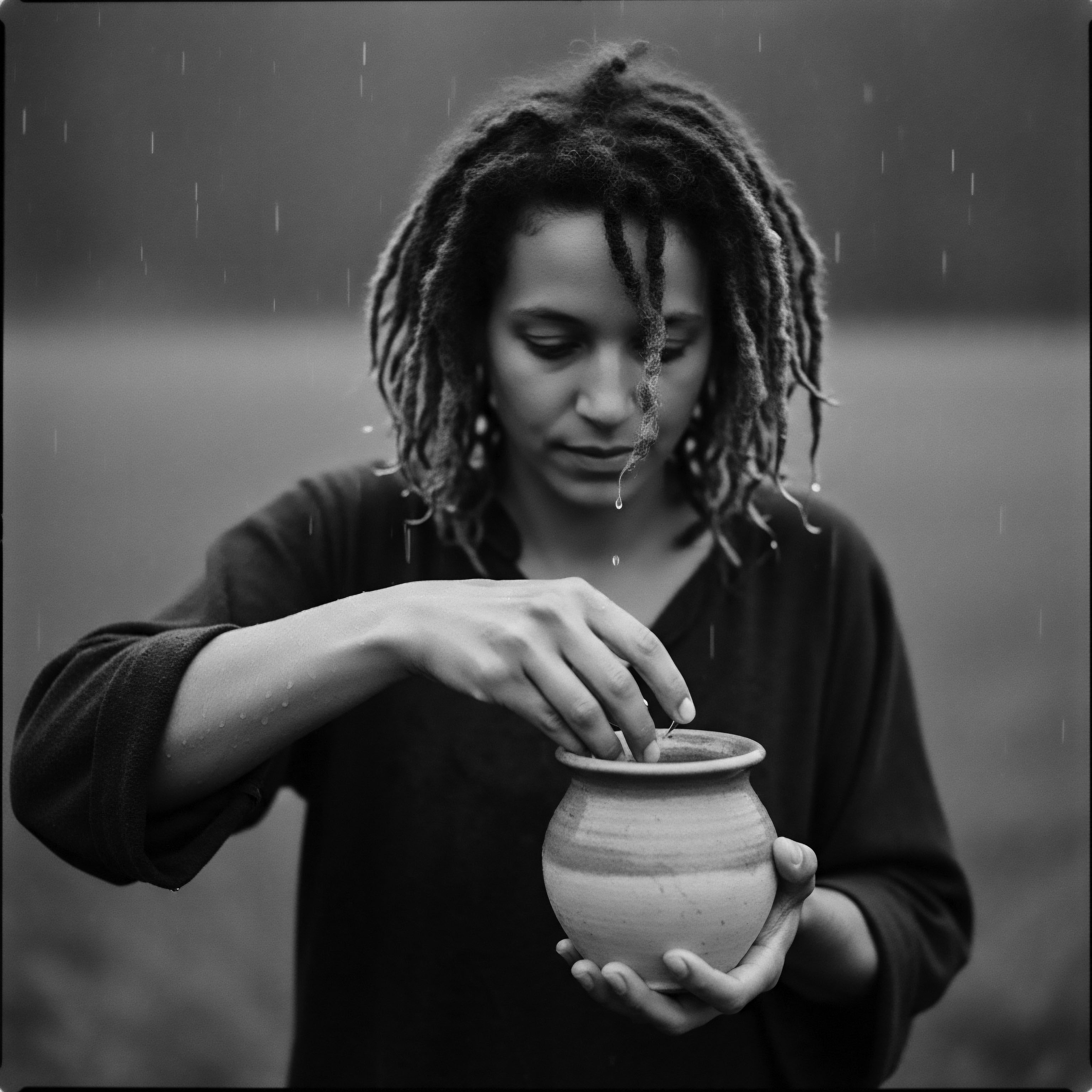
Roots
The very act of tending to one’s hair, for those of us connected to the textured hair heritage within the diaspora, is often a quiet conversation with antiquity. It speaks to whispers carried across oceans and generations, a language spoken not in words alone, but through the caress of oil, the rhythm of a comb, the deliberate shaping of a coil. This connection, elemental and ancient , forms a living archive, each strand a testament to the wisdom passed down, sometimes overtly, sometimes through the sheer survival of practice.
When we consider the profound relationship between hair oils and the very fabric of identity across diasporic communities, we are truly tracing the genesis of care, a ritual born of necessity and evolving into a profound symbol of self and collective memory. This is not a mere cosmetic exercise; it is an act of historical reverence , a physical manifestation of an enduring bond with ancestral lands and ways of being.
The origins of hair care, particularly with oils, are deeply etched into the geological layers of human history . Before the colonial gaze sought to redefine beauty, various African societies possessed an intricate knowledge of botany and cosmetology . They understood the intrinsic needs of their hair – its helical structure, its tendency towards dryness, its glorious volume – and sought solutions from the earth itself.
The baobab, the karité (shea), the moringa – these were not just trees; they were pharmacies, providing nutrient-dense oils that protected, nourished, and adorned. This ancestral pharmacopoeia laid the groundwork for practices that would later journey across continents, carried within the minds and hands of those forcibly displaced.
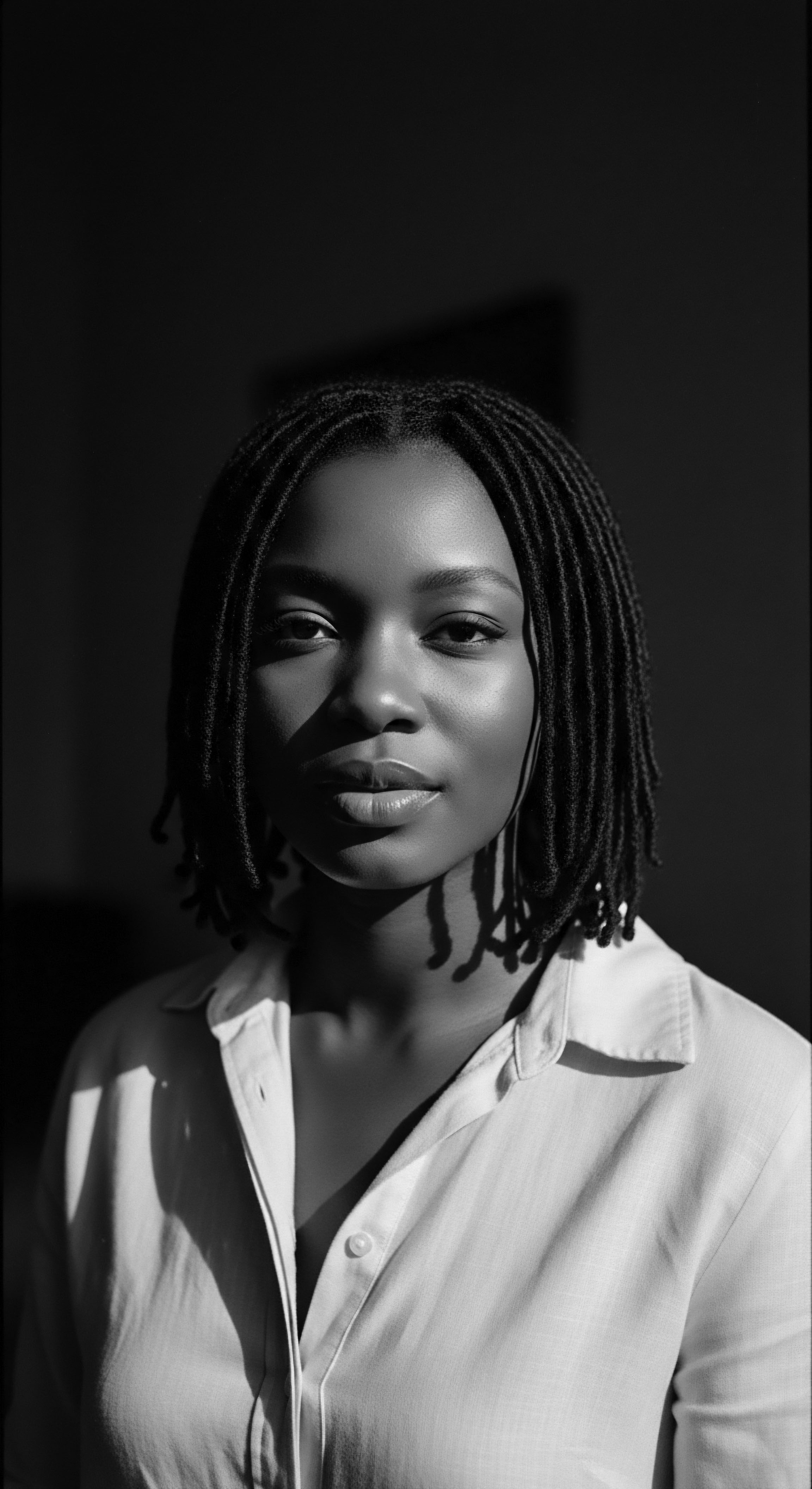
The Architecture of a Strand and Ancestral Wisdom
Our understanding of textured hair today, affirmed by modern trichology, often echoes insights gleaned from pre-colonial African societies. The unique curl patterns, ranging from loose waves to tightly wound coils, necessitate specialized care. These patterns dictate how natural oils produced by the scalp travel down the hair shaft. Straight hair, with its smooth cuticle, allows sebum to distribute easily.
Conversely, highly coiled hair presents numerous twists and turns, making it difficult for sebum to descend, leading to greater susceptibility to dryness and breakage. This inherent characteristic was, and remains, a central reason for the pervasive use of external oils. Traditional knowledge understood this biological reality implicitly, recognizing that supplemental lubrication was essential for hair health and manageability.
Consider the cultural lexicon that arose around hair textures. In many West African societies, the visual diversity of hair was a marker of age, status, marital standing, or tribal affiliation. The very naming conventions for hair types, often tied to descriptive words that evoke natural forms or animal characteristics, speak to a deep observational relationship with the hair itself.
While modern systems like the Andre Walker classification (and its later adaptations) attempt to standardize curl patterns (e.g. 3a, 4c), these classifications, born of a post-colonial era, sometimes inadvertently flatten the richer, more nuanced cultural understanding that preceded them.
The historical use of hair oils is a testament to ancestral understanding of textured hair’s unique needs, long before modern science articulated them.
Ancestral Methods of preparing and applying these oils were often highly sophisticated, involving processes of extraction, infusion, and blending. Shea butter, for instance, a staple across West Africa, requires a labor-intensive process of harvesting, drying, crushing, roasting, grinding, and kneading to extract the creamy butter. This is not a simple gathering; it is a ritualistic art, honed over centuries, reflecting a profound respect for the plant and its gifts. This deep connection to the source and the process of preparation imbued the oils with more than just physical properties; they carried the intention and wisdom of the community .
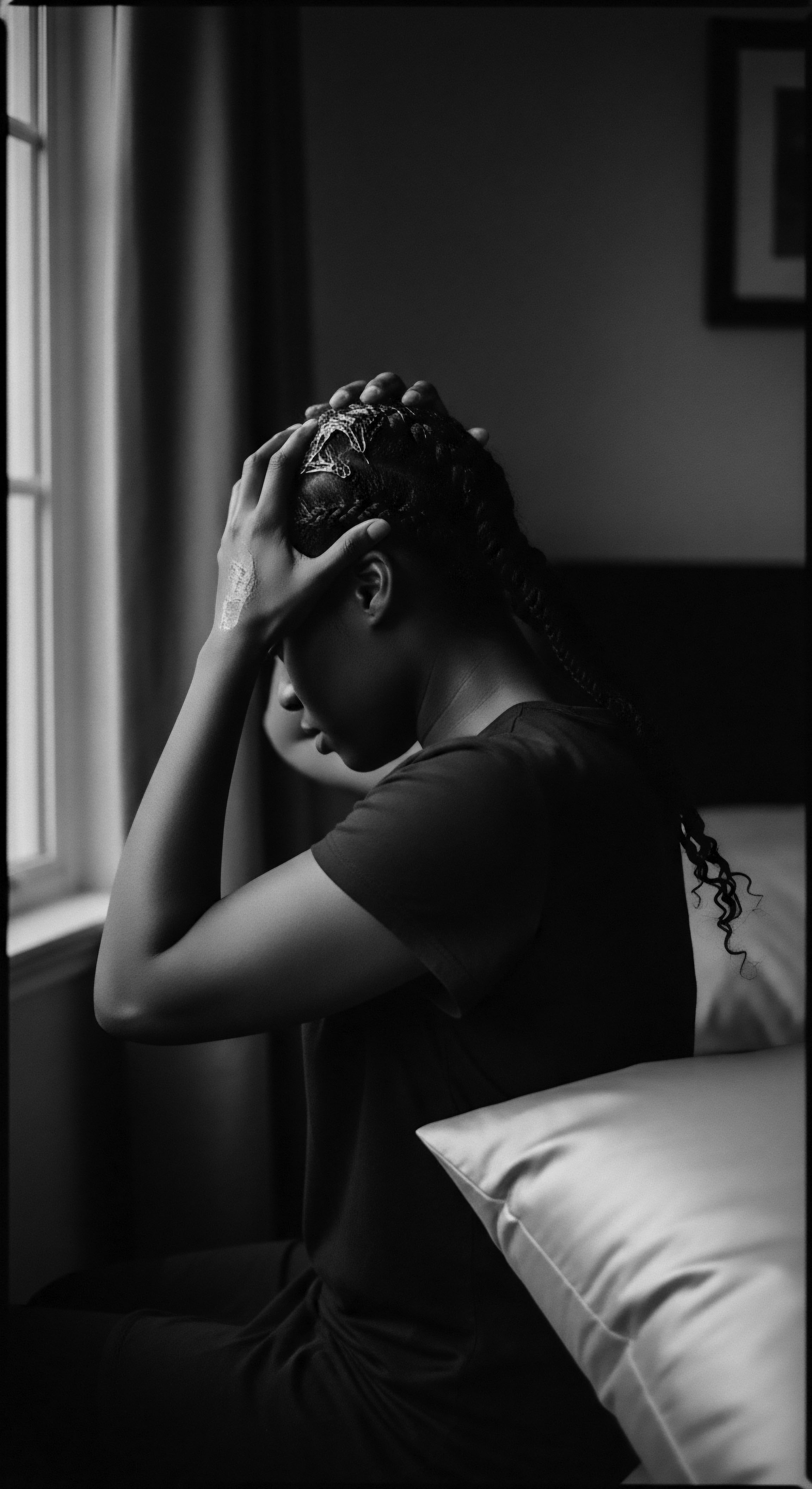
Early Pharmacopoeia ❉ Oils as Ancient Allies
The earliest records of cosmetic practices, dating back thousands of years, reveal the ubiquitous presence of oils. In ancient Egypt, for example, castor oil , moringa oil , and almond oil were applied not only for scalp health and shine but also as protective agents against the harsh desert sun, often mixed with aromatic resins and herbs. These preparations served both aesthetic and therapeutic purposes.
Similarly, across various sub-Saharan African civilizations, specialized oils extracted from locally available flora became fundamental to personal grooming and communal ceremonies. These were not just about beautification; they were deeply integrated into rituals of cleansing, protection, and spiritual preparation .
The use of oil was also tied to practical considerations of hygiene and pest control, especially in times before widespread access to synthetic cleansers. The consistent application of certain oils, often infused with repellent herbs, created an environment less hospitable to lice and other parasites, thus preserving hair health in a rudimentary, yet effective way. This practical utility solidified their place as indispensable elements of daily existence and communal well-being .
| Traditional Oil Shea Butter (Karité) |
| Ancestral Application (Pre-Diaspora) Deeply moisturizing, protective barrier against sun and wind, ceremonial anointment. |
| Contemporary Link in Diasporic Hair Care Still revered for its moisturizing properties, used in leave-ins, stylers, and as a sealant for textured hair. |
| Traditional Oil Castor Oil |
| Ancestral Application (Pre-Diaspora) Used for scalp health, promoting hair strength and growth, often applied to eyebrows and lashes. |
| Contemporary Link in Diasporic Hair Care A popular remedy for thinning edges, general hair growth, and deep conditioning within Black hair communities. |
| Traditional Oil Moringa Oil |
| Ancestral Application (Pre-Diaspora) Nourishing for hair and scalp, rich in vitamins, lightweight conditioning. |
| Contemporary Link in Diasporic Hair Care Increasingly recognized for its antioxidant and nourishing properties in modern hair formulations. |
| Traditional Oil These oils represent a fraction of the ancestral botanical knowledge that shaped hair care traditions across generations. |
The journey of these oils across the diaspora is a testament to the resilience of cultural memory . When individuals were forcibly removed from their homelands, they carried with them the intangible wealth of knowledge about how to care for their bodies, including their hair. The techniques, the ingredients (or their closest substitutes in new lands), and the underlying philosophy of care were preserved, adapted, and passed down. This continuity, against immense pressure to assimilate, underscores the profound connection between these humble oils and the preservation of a distinct cultural identity .

Ritual
From the foundational understanding of textured strands, we move into the vibrant realm of ritual, where hair oils cease to be mere substances and become integral elements of profound daily practices. For the diasporic community , these rituals are not just about hygiene; they are often acts of cultural preservation , self-affirmation, and communal bonding. The application of oils, whether a quick dab before stepping out or a leisurely, multi-hour session, carries the weight of history and the aspiration of identity. This is where the heritage truly comes alive, where the hands become instruments of ancestral wisdom.
Across the scattered yet interconnected geographies of the diaspora – from the Caribbean islands to the American South, from Brazil to Britain – variations of hair oiling rituals emerged, each reflecting the specific climate, available resources, and the blend of ancestral traditions that coalesced in a new land. Yet, a common thread ties them ❉ the recognition that hair is a living crown , deserving of dedicated attention and nourishment. This attention was, and remains, a quiet rebellion against narratives that sought to diminish the beauty and legitimacy of Black and mixed-race hair.

Daily Anointments ❉ Care as Connection
The daily anointing of hair with oils often served as a foundational act of self-care. It was a tangible connection to the body, a moment of presence amidst demanding realities. The oil worked as a sealant, particularly vital for textured hair , which loses moisture more readily. A simple routine might involve warming a small amount of oil between the palms, then gently working it from root to tip, paying special attention to the ends.
This practice, often accompanied by finger-detangling or gentle combing, helped to minimize breakage and retain length. Such routines were not just about superficial appearance; they were about maintaining the health and integrity of a hair type frequently subjected to harsh climates and even harsher social judgments.
In many diasporic homes, this routine was taught from a young age, often by a mother, grandmother, or aunt. The act of having one’s hair oiled was a lesson in care, a moment of intimacy and transmission of knowledge. It was in these quiet moments that the importance of hair heritage was imparted, not through grand pronouncements, but through the gentle stroke of oiled hands. These were lessons in patience, in self-respect, and in the enduring power of natural remedies.
The routine of hair oiling in diasporic homes became a silent language of love, resilience, and the continuity of ancestral practices.
Consider the meticulous care required for braids and twists , styles deeply rooted in African tradition. Before and during the creation of these styles, hair was often liberally oiled. This helped to smooth the hair, provide slip for easier manipulation, and condition the scalp beneath the protective style.
The oils also added a sheen that caught the light, signifying health and careful attention. This intentional preparation ensured the longevity of the styles and the health of the hair itself, which was particularly important during periods when protective styles might be worn for weeks or months at a time.
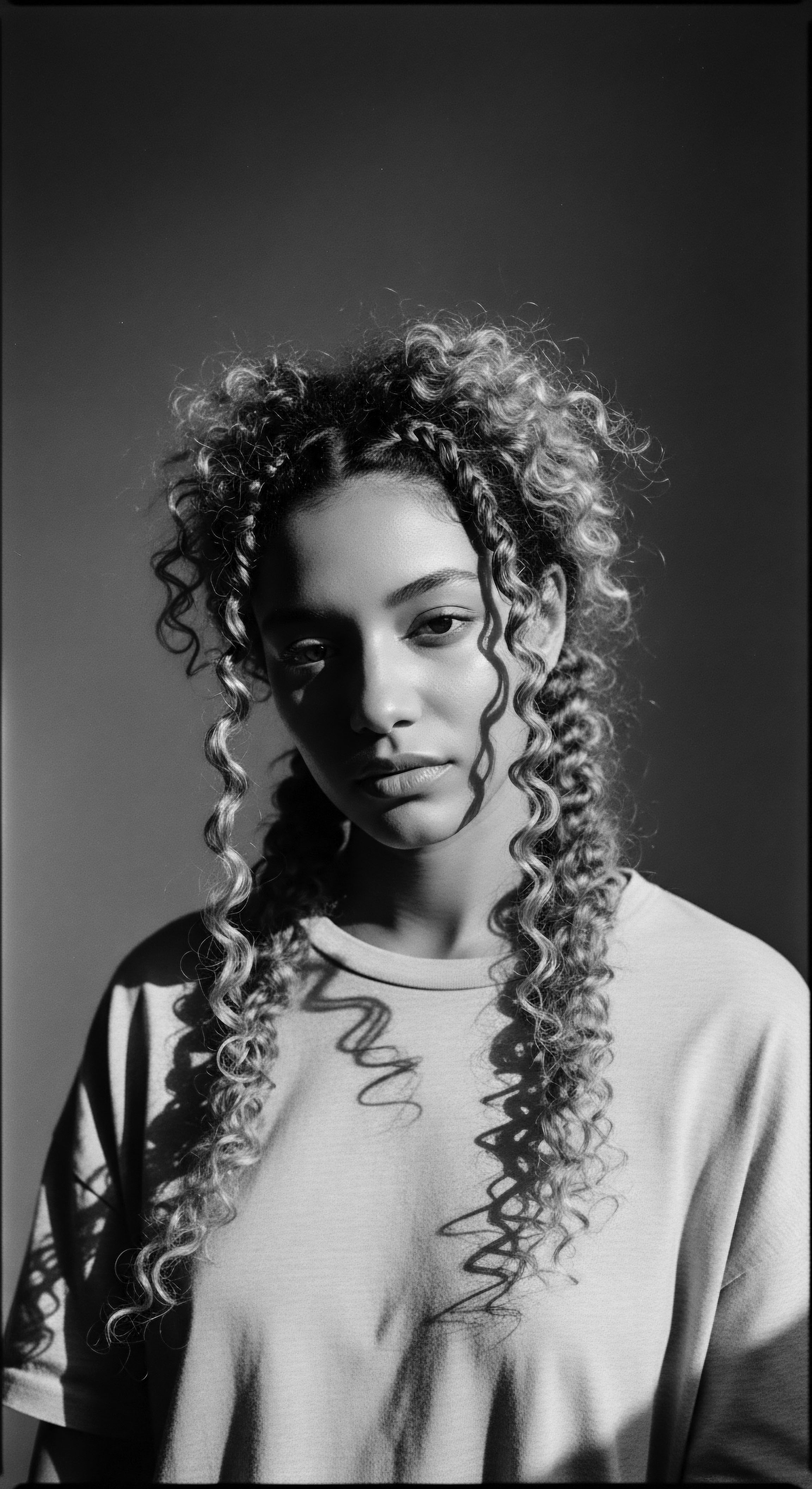
The Language of Adornment ❉ Oils and Styling
Hair oils were also crucial in the broader canvas of adornment and styling. In many traditional African societies, elaborate hairstyles were works of art, imbued with symbolic meaning. These styles often required the hair to be pliable and manageable, a quality enhanced by the consistent application of oils.
As these styling practices migrated across the diaspora, so too did the reliance on oils. Whether for sleek, classic styles or for defined curls and coils , oil served as a key medium.
For communities facing immense social pressure to conform to Eurocentric beauty standards, the continued use of hair oils for natural styling became an act of quiet defiance. It was a statement that their hair, in its natural state , possessed its own beauty and could be maintained and celebrated. The sheen imparted by oils became a badge of honor, a visible sign of healthy, well-cared-for textured hair in a world that often demonized it.
- Coconut Oil ❉ Revered across parts of the Caribbean and South America for its ability to penetrate the hair shaft, providing moisture and shine. Used in deep conditioning and as a sealant.
- Olive Oil ❉ A common kitchen staple repurposed for hair, particularly in the Americas. Known for its conditioning properties and ability to add softness and luster.
- Jojoba Oil ❉ Mimicking the scalp’s natural sebum, it became a preferred choice for balancing scalp oil production and providing lightweight conditioning, particularly in more recent times as access to diverse ingredients broadened.
- Argan Oil ❉ Though its historical origins are Moroccan, its popularity in the diaspora has grown due to its reported benefits in hair strength and shine, becoming a contemporary bridge to traditional North African wisdom.
The choice of oil, though sometimes dictated by availability, often carried its own subtle cultural resonance . In certain contexts, the very fragrance of an oil could evoke memories of home, family, or specific traditions. The scent of coconut oil, for example, might transport one to island breezes and familial gatherings, creating a sensory link to a collective past and a shared cultural memory . This multi-sensory connection reinforces the idea that hair oiling is far more than a physical act; it is a profound experience that binds individuals to their heritage.

Relay
The journey of hair oils through the diaspora is a testament to the enduring power of cultural relay , a constant flow of ancestral practices adapting and persisting through time and tribulation. Here, we delve into the complex interplay where oils transcended their initial purpose as mere conditioners, becoming potent symbols of resistance, reclamation, and identity. This story is deeply interwoven with the experiences of Black and mixed-race communities , who, despite systemic efforts to erase their cultural markers, fiercely held onto the wisdom passed down through generations.
The oppressive context of slavery and its aftermath forced a brutal re-evaluation of identity. Hair, once a source of pride and clear social signaling in African societies, was often subjected to ridicule, neglect, or forced manipulation to conform to dominant aesthetic norms. Yet, even in such hostile environments, the knowledge of oils persisted.
Enslaved people and their descendants often used whatever was available—pork fat, crude animal oils, or smuggled plant-based extracts—to tend to their hair, not just for hygiene but as a desperate act of maintaining a connection to a disrupted heritage . This quiet resistance was a vital act of self-definition against dehumanization.

Echoes of Resilience ❉ Oils in Resistance
The practice of oiling hair became a subversive act, a way to hold onto an authentic self when everything else was stripped away. During the era of slavery in the Americas, for example, enslaved women often used oils and fats – sometimes even bacon grease or butter – to condition their hair and scalps. While not ideal, these improvised methods spoke to an inherited understanding of what textured hair needed to thrive, despite the harsh realities.
This was not merely about maintaining appearance; it was about asserting humanity, about performing small, private acts of beauty that reaffirmed an identity under siege. This act of care, this continued engagement with traditional practices , served as a vital, silent form of resistance against the pervasive forces of cultural erasure.
The use of hair oils also played a functional role in crafting hairstyles that served practical purposes during enslavement. Braids, often secured and protected with oils, could hide intricate maps for escape, or carry seeds for new crops. In this context, the oil was not just a cosmetic aid but a facilitator of survival, deeply embedded in the narratives of defiance and ingenuity . These hidden histories underscore how seemingly simple practices held profound and often covert significance within the heritage of struggle .
Hair oils evolved from simple care agents to powerful symbols of defiance, carrying the silenced narratives of enslaved peoples’ self-preservation.
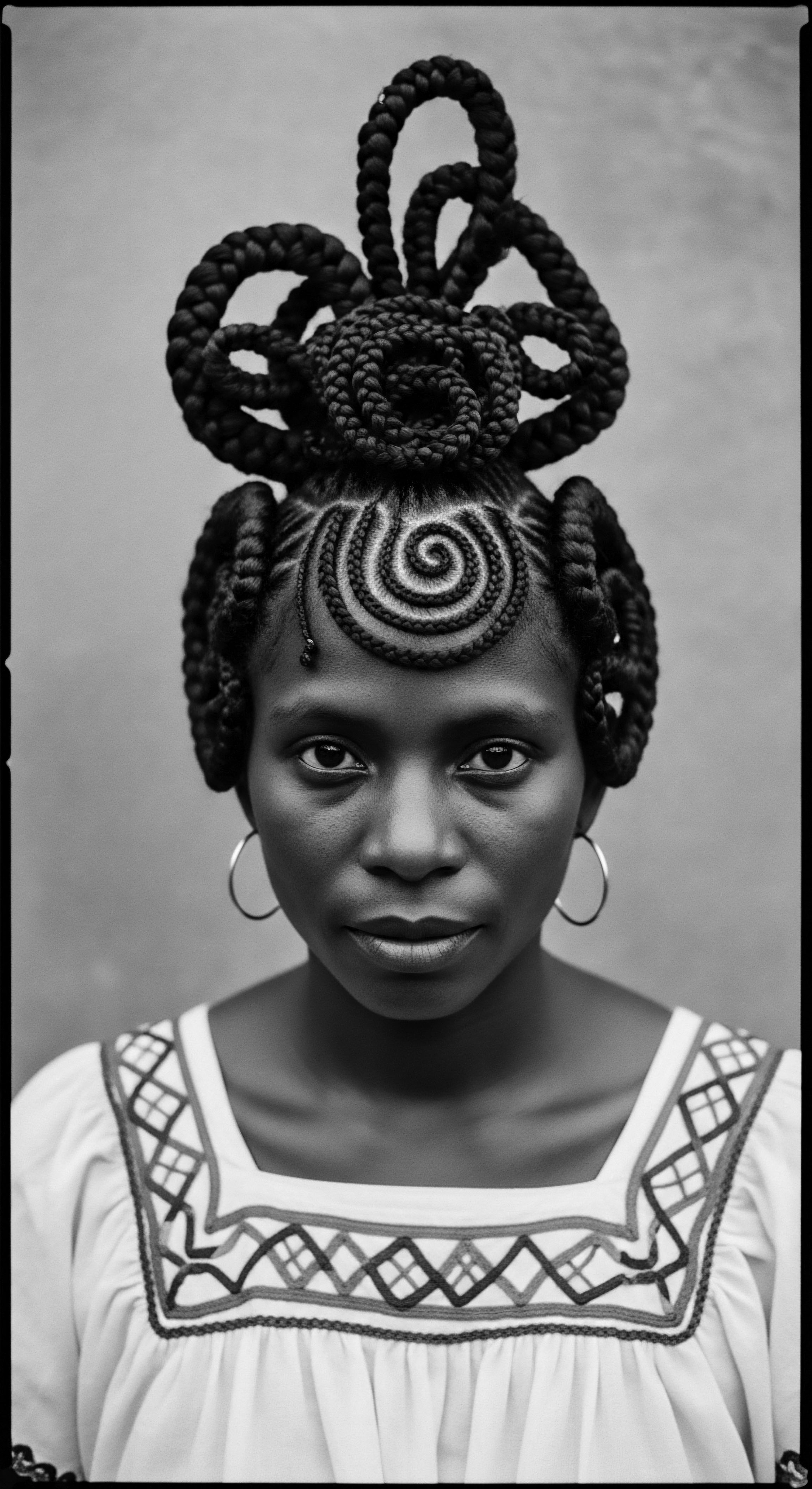
Diasporic Innovation ❉ Adapting Ancestral Wisdom
As diasporic communities spread and evolved, so too did the approach to hair oils. The limited availability of traditional African botanicals in new lands spurred innovation and adaptation. Indigenous plants of the Americas and the Caribbean, alongside introduced species, were explored for their beneficial properties.
The oil of the Jamaican black castor bean , for instance, is a quintessential example of this diasporic alchemy. While castor oil itself has ancient African roots, the specific processing method that yields the thick, dark “black castor oil” is a product of Jamaican heritage, born from the need to adapt ancestral knowledge to new environments.
This process involves roasting the castor beans before pressing, which gives the oil its distinctive dark color and nutty aroma, along with a higher ash content that some believe enhances its efficacy for hair growth and scalp health. The rise of Jamaican Black Castor Oil as a global phenomenon within the textured hair community speaks volumes about the power of diasporic innovation and the enduring resonance of ancestral remedies . It illustrates how traditional knowledge, rather than being static, is a living, evolving entity, constantly adapting and reinventing itself while retaining its core purpose.
Another compelling instance lies in the Haitian practice of using Lwil Maskriti (Haitian Black Castor Oil), a similar preparation with its own distinct cultural significance and generational legacy. These specific, regionally adapted castor oil traditions stand as powerful case studies in the resilience and adaptability of Afro-diasporic hair heritage . They affirm that even when roots are forcibly transplanted, the wisdom they carry can flourish in new soil, producing new iterations of ancient truths. The persistent demand for these specific oils, particularly within the Black hair care market, is a testament to the community’s trust in these intergenerational remedies .
(Byrd & Tharps, 2014, p. 102).

The Scientific Affirmation of Ancient Practice
In contemporary times, modern science often validates the very benefits that ancestral communities intuited through generations of observation and practice. Take, for example, the molecular structure of certain oils. Coconut oil, with its high lauric acid content, has been shown to penetrate the hair shaft more effectively than many other oils, reducing protein loss (Rele & Mohile, 2203). This scientific finding provides a contemporary affirmation for centuries of anecdotal evidence and traditional wisdom that lauded coconut oil for its strengthening properties.
Similarly, the fatty acid profiles of oils like shea butter (rich in oleic and stearic acids) provide excellent emollient properties, forming a protective seal on the hair cuticle. These qualities align perfectly with the traditional use of shea butter for intense conditioning and protection against environmental damage. This convergence of ancient practice and modern scientific understanding reinforces the profound intelligence embedded in hair care heritage . It allows us to appreciate that these practices were not simply based on superstition, but on a deep, experiential understanding of hair’s biological needs.
- Formulation Evolution ❉ Traditional oils were often applied pure or minimally infused; modern formulations blend oils with other active ingredients to enhance specific benefits and cosmetic elegance.
- Application Method Refinement ❉ While manual application remains common, modern tools and product forms (sprays, serums) offer new ways to distribute oils evenly.
- Targeted Solutions ❉ Ancestral practices often used broad-spectrum oils; contemporary approaches often select oils based on specific hair concerns like porosity, elasticity, or scalp conditions.
The continued prominence of hair oils in the diaspora also speaks to their role as a bridge between generations and a symbol of cultural pride . In a beauty industry historically dominated by products ill-suited for textured hair, the emphasis on natural oils became a way to reclaim agency and celebrate indigenous forms of beauty. The oils became not just conditioners, but cultural affirmations , reminding individuals of their lineage and the enduring power of their ancestral practices . This continuous relay of knowledge and practice ensures that the story of hair oils and identity remains a living, breathing narrative, always evolving, yet always deeply rooted.

Reflection
In tracing the historical connection between hair oils and cultural identity in the diaspora , we unearth more than just cosmetic practices; we discover a profound meditation on being, on survival, and on the quiet triumphs of spirit. Each drop of oil, from the ancient gourd to the modern bottle, carries the whispers of countless hands and the echoes of generations. It speaks to a textured hair heritage that defied erasure, adapted to new lands, and emerged as a vibrant, undeniable marker of identity. The very act of applying oil is a reaffirmation, a conversation with the self and with those who came before.
This journey from the elemental biology of the strand, through the tender threads of ritual, to the unbound helix of contemporary identity, reveals an unbroken lineage. It shows us how seemingly simple acts of care are, in fact, complex cultural transmissions , laden with meaning and resilience. The knowledge embedded in these practices, born of necessity and elevated to art, continues to nourish not only our hair but also our collective soul.
It is a testament to the truth that even in the face of immense adversity, beauty finds a way to persist, to thrive, and to communicate the enduring power of who we are. Our hair, steeped in these traditions, remains a living, breathing archive, constantly writing new chapters while holding fast to its ancient script.

References
- Byrd, Ayana D. and Lori L. Tharps. Hair Story ❉ Untangling the Roots of Black Hair in America. St. Martin’s Press, 2014.
- Rele, Atul S. and R. B. Mohile. “Effect of Mineral Oil, Sunflower Oil, and Coconut Oil on Prevention of Hair Damage.” Journal of Cosmetic Science, vol. 54, no. 2, 2003, pp. 175-192.
- Opoku, Daniel. African Traditional Hair Care ❉ A Cultural Journey. African Heritage Press, 2018.
- Akbari, Sarah. The Global History of Cosmetics ❉ From Ancient Rituals to Modern Innovations. University of California Press, 2021.
- Mercer, Kobena. Welcome to the Jungle ❉ New Positions in Black Cultural Studies. Routledge, 1994.
- Eze, Nkechi. The Wisdom of Our Elders ❉ Traditional African Hair Practices. Cultural Preservation Publications, 2019.
- hooks, bell. Sisters of the Yam ❉ Black Women and Self-Recovery. South End Press, 1993.
